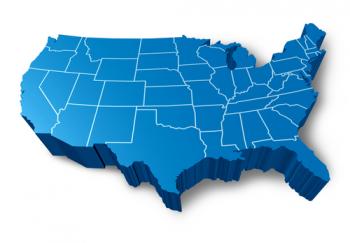An Overview of the Inter-American Convention
 International trademark law is sometimes implemented on a regional basis. In the Americas, the United States took the lead in setting up trademark protection agreements with Latin American nations. The most widespread agreement was enacted with the passage of the General Inter-American Convention for Trademark and Commercial Protection of Washington, 1929, which is alternately referred to as the Washington Convention or as the Pan-American Convention of 1929. It was signed by the United States, Peru, Paraguay, Panama, Honduras, Haiti, Guatemala, Cuba and Colombia.
International trademark law is sometimes implemented on a regional basis. In the Americas, the United States took the lead in setting up trademark protection agreements with Latin American nations. The most widespread agreement was enacted with the passage of the General Inter-American Convention for Trademark and Commercial Protection of Washington, 1929, which is alternately referred to as the Washington Convention or as the Pan-American Convention of 1929. It was signed by the United States, Peru, Paraguay, Panama, Honduras, Haiti, Guatemala, Cuba and Colombia.
The United States had enacted previous trademark protection treaties with its Latin American neighbors in 1910, in the Buenos Aires Convention agreed to with Bolivia and Ecuador, and the Santiago Convention in 1923, signed by Uruguay, the Dominican Republic, and Brazil. The passage of the Inter-American Convention into international trademark law followed from the resolutions adopted to that effect on February 15, 1928 through the Sixth International Conference of American States held at Havana and on May 2 of that year through the Governing Board of the Pan-American Union in Washington.
This trademark protection act supplanted the earlier international trademark legislation enacted in Santiago in 1923 as the Convention for the Protection of Commercial, Industrial and Agricultural Trade Marks and Commercial Names.
The Inter-American Convention and its equivalent companions in international trademark law allow for trademark owners to block the registration of trademarks in other countries on the basis of trademark protection violations.
The trademark protection procedure enacted through the treaty requires that the relevant motion be filed by a registrant for the infringed-upon trademark, that the new trademark is sufficiently close to the older mark to cause confusion, that it be proven that the individual applying for the new trademark have been aware of the older one, and that the two trademarks function in regard to the same class of goods or services.
Related Topics
- Federal Registration Symbol
- Trademark Infringement Overview
- An Overview of Trademark Law
- A Brief Overview of Trademark Registration
- What Does a Trademark Attorney Do?
- Background Dilution
- International Trademark Law Overview
- Appeals to the Lanham Act of 1946
- Domain Names Under Trademark Law
- How to Conduct a Trademark Search